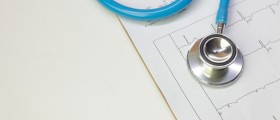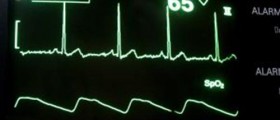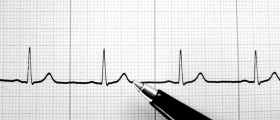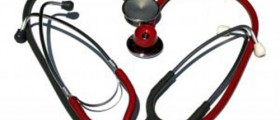
Pulse rate is simply the rate of the heart beat. Every heartbeat causes rhythmic dilatation and contraction of the arteries receiving theblood from the heart, which can be measured as the pulse rate. A person’shealth can be estimated according to his or her pulse rate, because thisnumber indicates the condition of a human heart.
How to Feel Pulse
Wherever on the body there is an artery near the bone, youcan feel the pulse. Some places are found to be the easiest to feel the pulse, andas many people already know, you can feel the pulse on someone’s wrist or onthe neck, simply by placing the tip of the index, second and third finger to thespecified spot. Artery compressed to the bone of the wrist is known as radial,and the one felt on the neck is called carotid artery. However, you can also feel thepulse on the inside of the elbow, sensing the brachial artery. Behind the kneeis popliteal artery and on the ankle you could feel posterior tibial artery andfeel the pulse of a person.
To measure someone’s pulse all you need to do is presslightly the spot and count the beats. You can count all beats you can feel for 15seconds and then multiplying it by 4 you will get the pulse rate per minute. Insteadof counting the beats for 15 seconds, if you prefer, you could also count themfor a whole minute. If you count 18 beats in 15 seconds, that person’s heartrate is 72 beats per minute.
Normal and Abnormal Pulse Rate
Values about 60 to 80 beats per minute are considered normalfor most people. Athletes usually have lower pulse rate, but also normal peoplewhile sleeping. During some intense physical activity a person’s pulse can goup to 150 or even 200 beats in one minute. Values lower than 60 beats perminute are known as bradycardia and those over 80 as tachycardic pulse.
Children’s pulse depends on their age. Babies usually havepulse rate about 100 to 160 beats per minute, toddlers 70 to 120, while someolder kids have the pulse rate similar to adults’ (about 60 to 100 beats perminute).
Adult men’s heart beats 68 to 75 times in one minute. Adultwomen, on the other hand, are found to have a bit higher pulse rate, and theirnormal values go around 72 to 80 per minute.
As abnormal pulse rate, doctors consider all values above 95 beats in one minute, measured while the person is resting.

















Your thoughts on this
Loading...